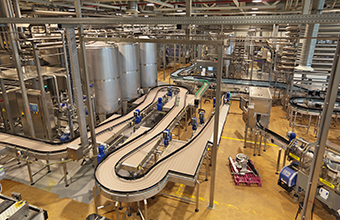Signing a new commercial lease can be tricky; there is no standard lease format and there are many details that can easily be overlooked. The details, or “fine-print,” are something a well-established tenant representative is very familiar with. Long story short, an experienced tenant representative can save you from being taken advantage of. However, the more informed you are, the more confident you will be when it is time to sign your new lease agreement
Tenant Improvements
There is so much more work and time involved in improvements (and making sure you’re getting it right) than most tenants realize, and the costs associated with any improvements keep going up and up and up. Whether a new or older building, it is incumbent upon you, the tenant (with the landlord’s assistance, approval and, hopefully, financial help), to design your space to your specifications and then determine if pricing is accurate and if it meets code. This process can easily take six months or more. All these steps need to be done well before terms are finalized. Under (almost) no circumstances should a lease be signed before these details are established. Landlords aren’t apt to release you from an obligation because you failed to do your due diligence beforehand.
Repairs & Maintenance
What if the building needs repairs? It is important to know if these, often unforeseen, costs are going to be your responsibility or those of the landlord. Your lease agreement should lay out a method for resolving maintenance issues and who the responsible party will be. Especially in single story office, flex, or industrial space, maintenance and repair of mechanical systems are the responsibility of the tenant, but many landlords will ask for the tenant to pay for replacement of such systems when they are past their useful life. This can turn into an economic burden and tenants need to be protected with lease language that addresses these issues and who’s responsible.
Usable vs. Rentable Square Footage
At the onset of your space search, it is critical to know the difference between your usable and rentable square footage and to assess how each building’s measurements are structured. This will ultimately help your bottom line as there can often be a big spread between what you’re utilizing and what you’re being charged rent on. While the usable square feet (USF) includes the area you will physically be utilizing to conduct business, the rentable square feet (RSF) often includes a portion of the building’s common elements, such as hallways, restrooms, lobbies, and stairways that are accessed by all building tenants. You have the right to have your selected space physically measured by a professional architect or space planner to confirm your USF and RSF and then incorporate it into negotiations.
Subleasing
You may want to sublease a portion, or all, of your space to subsidize your rental obligation at some point. Although most tenants don’t think about getting rid of space at the cusp of acquiring space, subleasing is a very important section of the agreement. Since no one is immune to changes in staffing or market conditions over a longer-term lease, it is vital to negotiate those terms with the landlord prior to executing the lease agreement. And, since the devil’s in the details, having an expert review the lease language addressing subleasing, which is getting more and more cumbersome and restrictive to tenants, will protect you in the long run.
Rent & Rent Increases
An important detail to consider in your new lease is the commencement date of rent. Will it be upon lease execution, build-out completion or a fixed date? There’s considerable value in establishing these details early in negotiations, as you’d like to avoid paying rent prior to physically occupying the space.
In addition to the rent commencement date, it is important to know what your rent covers. Are property taxes or utilities included? Depending on your lease structure and negotiations all or no utilities may be included.
You will also want to review the portion regarding rent increases, or escalations. It is not uncommon for operating expenses (which are categorized as rent) to increase yearly. However, it is important to know how those increases are being calculated and if there is a ceiling in place to keep it from rising too high.
Understanding the language of your commercial lease agreement is just the beginning. Signing a new lease, or renewing a current lease is your opportunity to negotiate, don’t let the landlord or leasing agent take advantage of your needs. Hiring a tenant representative is of no cost to you. Please reach out if you have any questions or if you would like to connect with one of our talented advisors.




